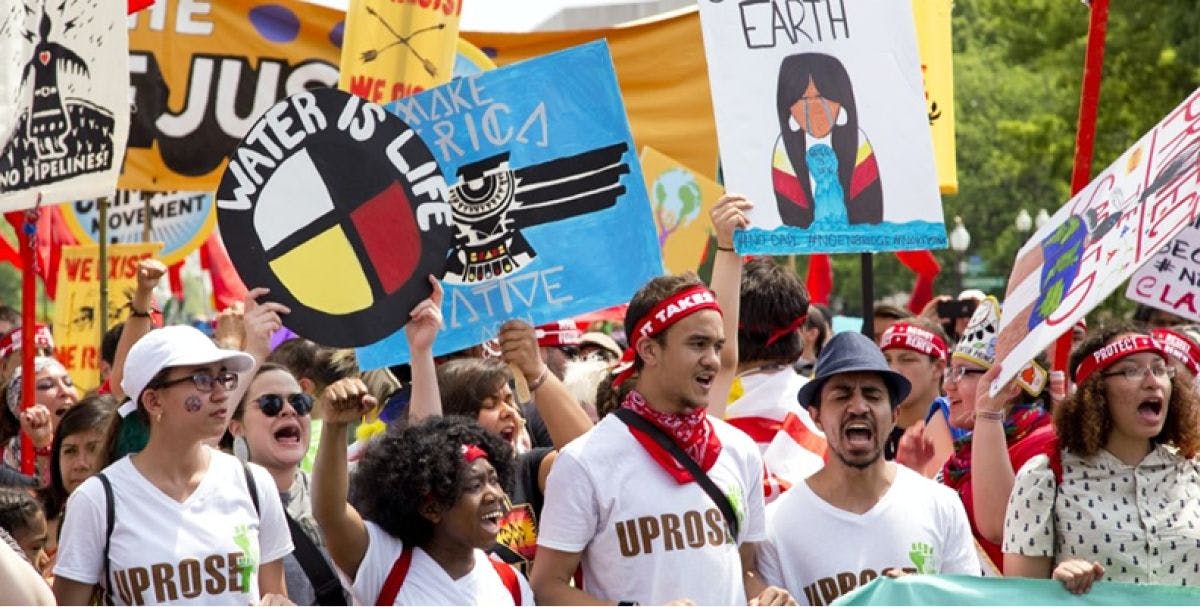Warren County, 1982—rural, low-income, and predominantly black.
North Carolina announced their intention to move illegally contaminated soil from state roadsides to a newly constructed hazardous waste landfill in the small town of Afton. The decision sparked six weeks of marches and street protests during which more than five hundred people were arrested, including civil rights leader Benjamin F. Chavis Jr. and a U.S. congressman. This gave rise to several studies measuring the nexus between pollution, poverty, race, and ethnicity and birthed the original definition of environmental justice by the “father of environmental justice,” Dr. Robert D. Bullard, who described environmental justice as “the principle that all people and communities are entitled to equal protection of environmental and public health laws and regulations.”
Let’s talk about environmental justice.
First and foremost, if we want to talk about environmental justice, we must acknowledge and define environmental racism. Environmental racism is the inverse of environmental justice—the “burden imposed on racialized communities by disproportionately locating hazardous and toxic industries (hazardous waste sites, landfills, incinerators) in their neighbourhoods.” Canadian development and industry have not been immune to environmental racism, with one needing only to look as far as Sarnia, Ontario, Aamjiwnaang First Nation, Grassy Narrows First Nation, Shelbourne, Nova Scotia, Walpole Island First Nation, Kashechewan First Nation, and Boat Harbour, amongst many others.
Unlike many other countries, Canada does not have a “legislated environmental justice lens,” and therefore, significant barriers to environmental justice continue to exist. Without a substantive public right to a clean and healthful environment, broad discretion under environmental legislation is granted to government officials, making it very difficult for members of the public to stand up against systemic environmental violence and engage in policy-making procedures.
To be truly just, environmental justice must include not only the rightful distribution of burdens, such as pollution and the cost to prevent it, but must also include the rightful distribution of benefits, such as those afforded by environmental features such as water. Seeking environmental justice also includes the acknowledgement that inequalities do not exist in a vacuum. Unpacking systemic environmental racism must involve addressing colonialism and the patriarchy. In fact—environmental racism has gendered impacts—resource development and extraction projects have been linked to spikes in violence against Canadian Indigenous girls, women, and two-spirit people.
Although unsuccessful, the Warren County protests marked the first instance of environmental protest by people of colour being brought to national attention in the United States. Many grassroots environmental justice organizations have since formed to plant seeds combating environmental racism and advocating for environmental protection. It’s up to us to take these seeds, care for them, water them, and thus allow social change to grow.

Here are five ways you can start to advocate for environmental justice:
- Get out and vote. Voting offers you the opportunity to weigh in on who will be representing you in various government bodies. An environmental poll undertaken in the United States revealed that despite sixty-four percent of Americans being concerned about global warming, 15.78 million environmentalists didn’t take to the polls. Without voter “demand” for strong environmental leadership, elected officials will never prioritize environmental issues.
- Hold elected officials accountable. Learn how to contact your legislators or start a letter-writing campaign. Citizens for Public Justice has a great “Advocacy Toolkit” to help you get started.
- Donate. Support environmental justice efforts by putting your money where your mouth is. The “Green Spotlight” highlights thirty-eight Canadian environmental groups. Though it’s not a definitive list, it’s a great place to start.
- Show up. Attend community events held by your local representatives or volunteer for an environmental not-for-profit organization that fights for environmental justice.
- Sign petitions. As written on the House of Commons documentation on public petitions, “A public petition, signed by Canadian residents and addressed to the House of Commons, the Government of Canada, a Minister of the Crown or a Member of the House of Commons, is one of the most direct means for people to communicate with Parliament.” Petitions give voice to present matters and indicate the number of people interested in an issue.
Our changing climate and pollution of our waters, lands, soils, and skies may affect all of us, but we all experience the effects differently.




